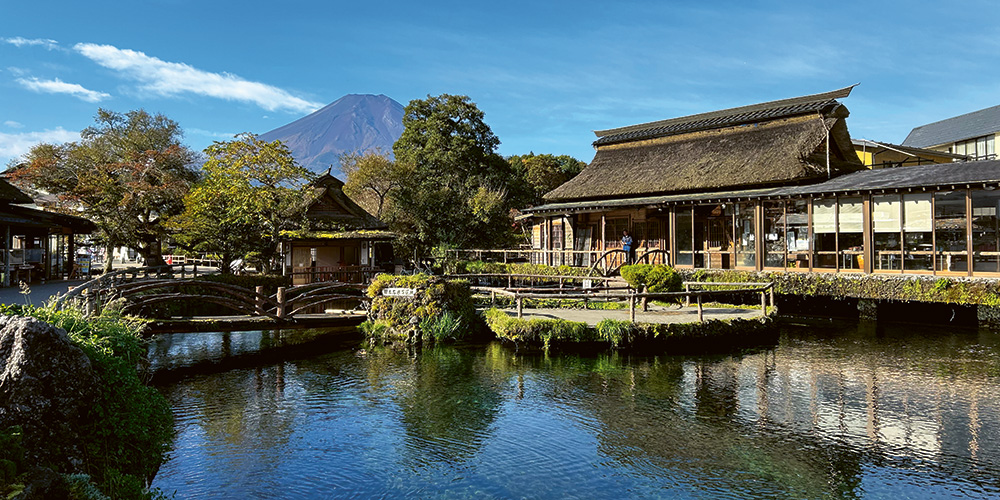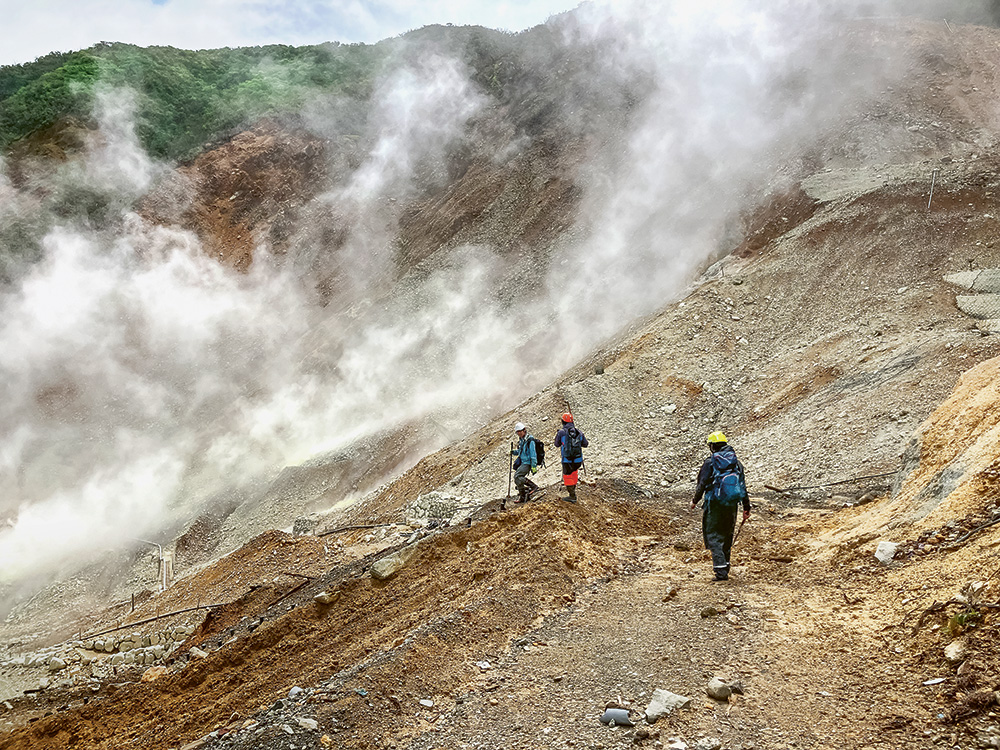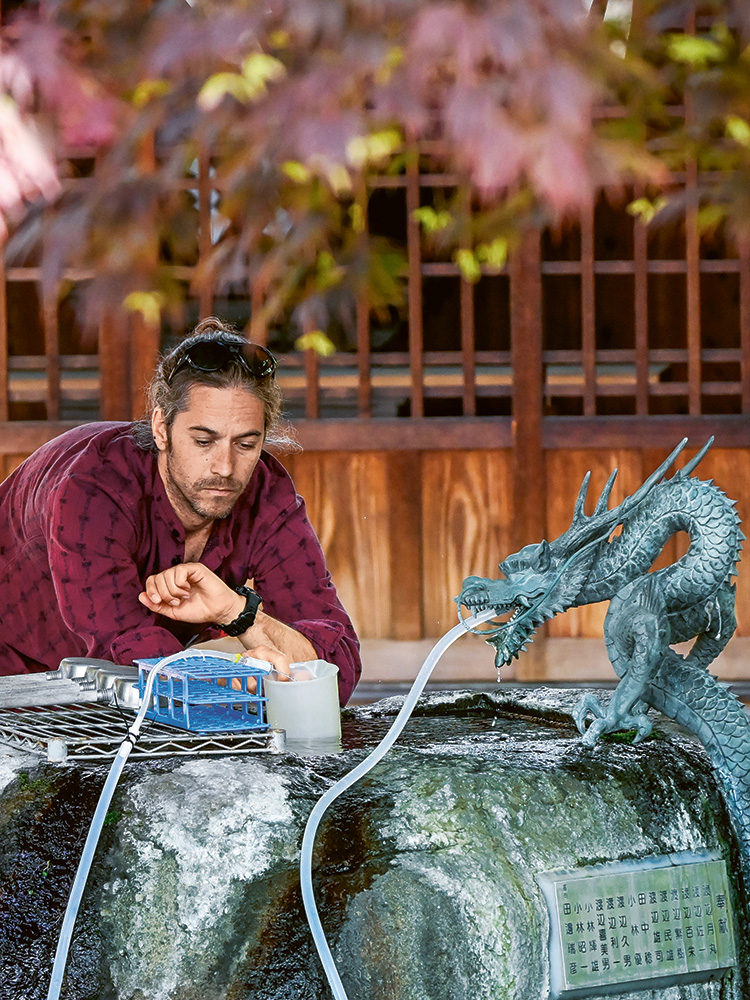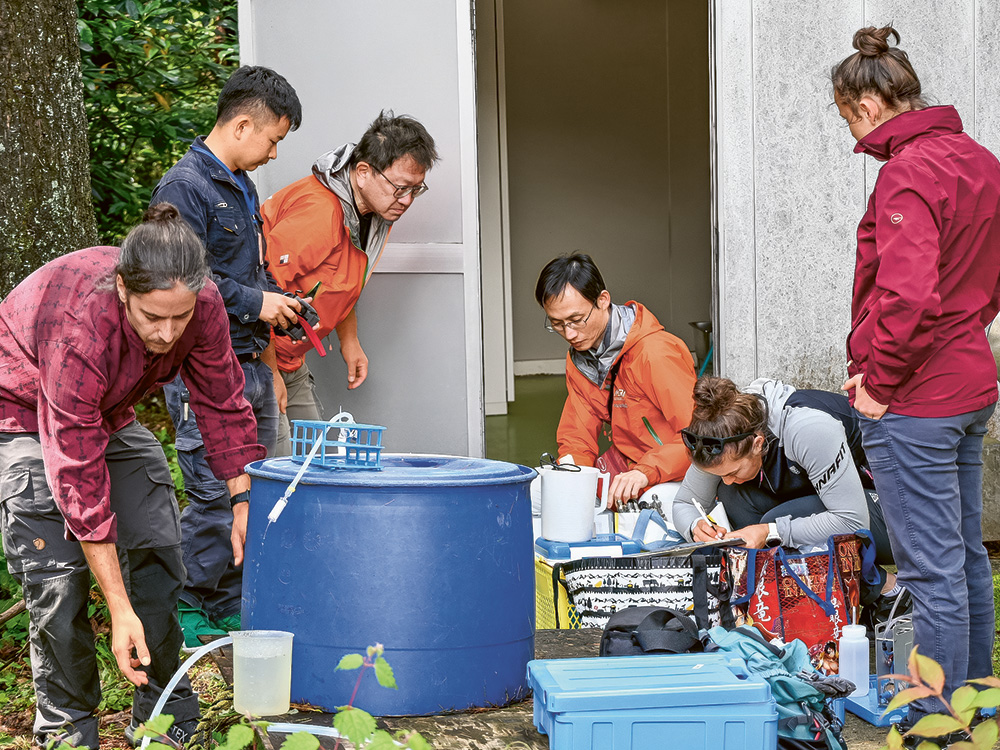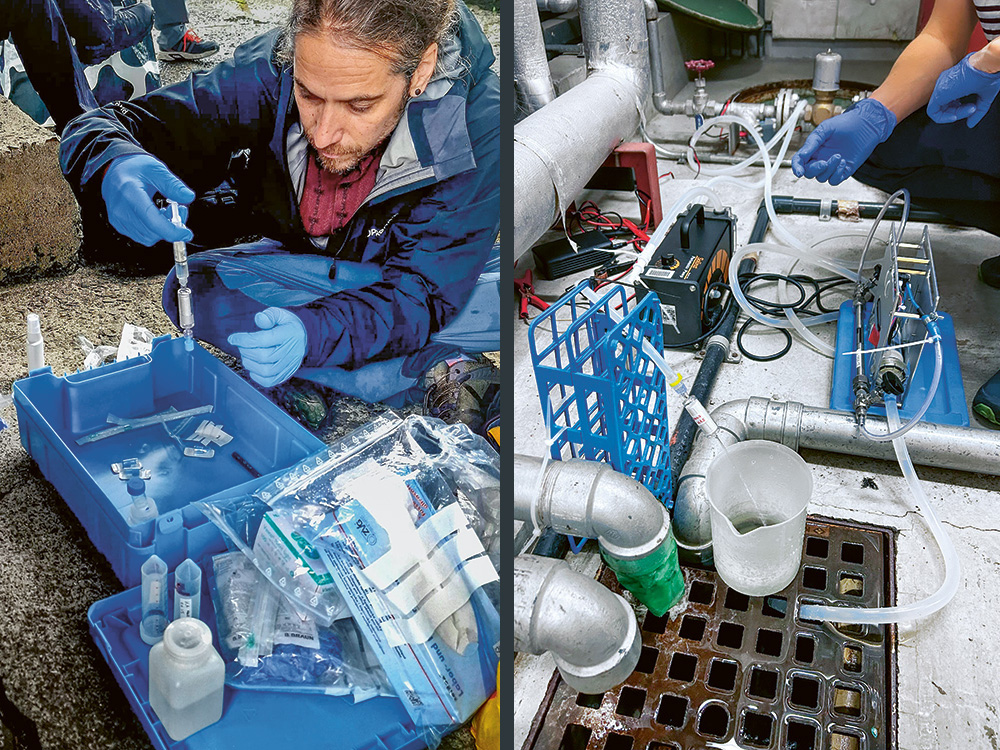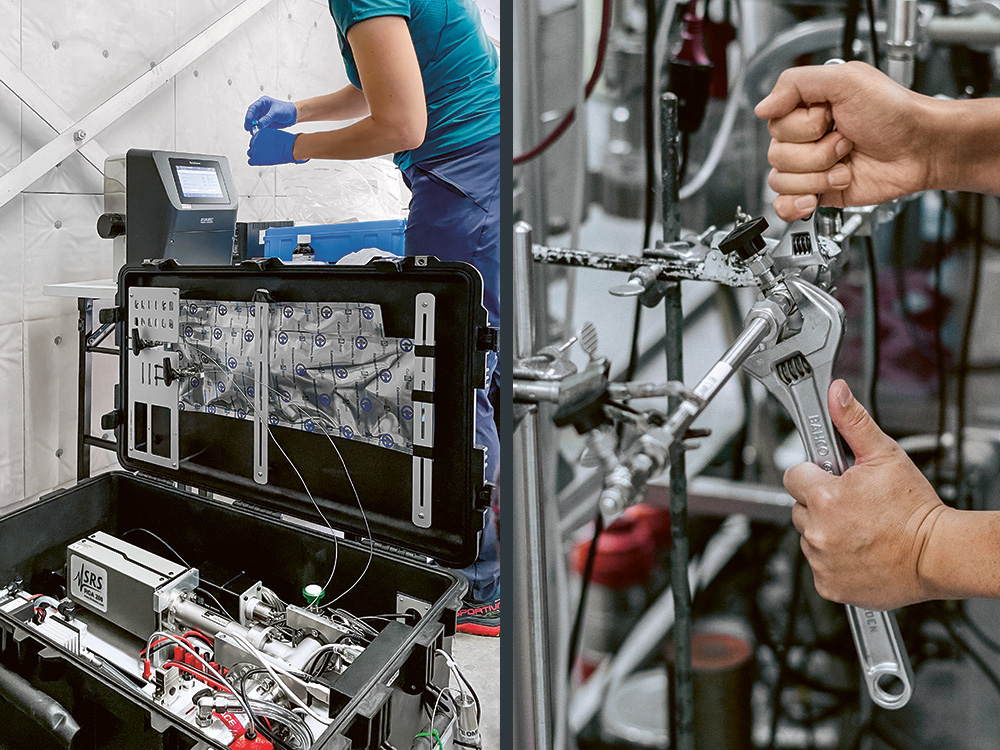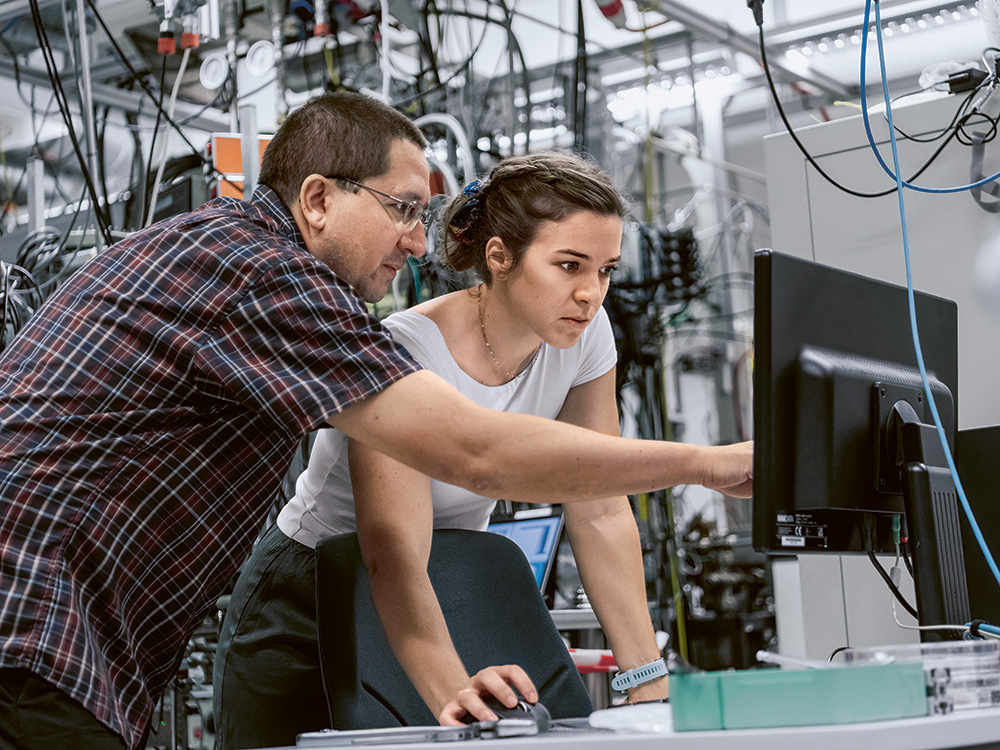Hidden water flow paths.
Text: Noëmi Kern
Rain seeps into the ground and becomes part of the groundwater before reemerging from springs at different locations. Which subterranean pathways does the water follow? How long does it remain underground? And how does that affect its quality?
These questions are being explored in greater detail by researchers from the University of Basel within the framework of an SNSF project. As part of this work, the researchers take hydrogeochemical measurements that also reveal volcanic and seismic activity within the Earth. Ideally, this could be used to predict volcanic eruptions and earthquakes.
Also known as the “water mountain” in Japan, Mount Fuji is born from unique geological circumstances at the meeting point of three continental tectonic plates. This results in a highly complex groundwater system (represented, in this case, by the Oshino Hakkai springs). This makes it difficult to investigate using standard methods.
This landscape is shaped by its volcanic past. Sulfur vapors escape to the surface. The groundwater is also influenced by this geology. Clues as to where the water comes from — and the route by which it flows — are provided by microbial environmental DNA (eDNA) as well as by noble gases such as helium and trace elements such as vanadium. These natural substances are also referred to as tracers.
To carry out their analyses, the researchers need fresh spring water, such as that flowing from this well in a shrine. Oliver Schilling pipes the water through a hose fitted with a filter in order to collect bacteria, from which the researchers extract DNA — the aforementioned eDNA — for further analyses. Because the water is so pure, it takes a long time to filter out enough DNA for this work.
The researchers use the same method to extract samples at a pump well that supplies fresh groundwater to one of the largest whisky distilleries in the world. The team from the University of Basel works with researchers from Mount Fuji Research Institute, Kochi University and the University of Tokyo.
Picture on the left: While still on site, Oliver Schilling uses a syringe to apply a stabilizing solution to the filter containing the bacteria. This solution prevents the genetic material (DNA) from breaking down before it is analyzed in the laboratory at the University of Basel.
Picture on the right: The device at the feet of doctoral student Friederike Currle extracts gas from the water and was invented at the University of Basel and at Eawag (the Swiss Federal Institute of Aquatic Science and Technology). Gas is collected in a metal tube mounted on the left of the device and is subsequently analyzed in Switzerland (see Image 7).
Picture on the left: The mobile mass spectrometer allows an initial on-site analysis of gases dissolved in the water. The composition provides clues as to which routes the water has taken underground before emerging at the surface. By virtue of its special tectonic situation, Mount Fuji is made up of highly permeable basalt. As water flows through this rock, it dissolves out substances that can be quantified in the measurements.
Picture on the right: This is followed by more precise analyses in the Noble Gas Laboratory of ETH Zurich and Eawag, where the researchers take the sample container of gas extracted from the water and connect it to the mass spectrometer. They first release a “gulp” of gas into a sort of prechamber, where they measure the pressure. The gas is then fed through the machine in order to analyze its constituents.
Based on the composition of noble gas isotopes, researchers can draw conclusions about the water temperature and air pressure during groundwater recharge. These clues can be used to determine the pathways taken by the water — and its age. Has the water been in the ground for 50,000 years or only five? In the “command center,” postdoc Stéphanie Musy and laboratory head Yama Tomonaga check whether the measurement results make sense. One day, these insights could help to improve water management and to establish early warning systems for earthquakes and volcanic eruptions.
Oliver S. Schilling has been Assistant Professor of Hydrogeology in the Department of Environmental Sciences at the University of Basel and leader of the Tracer Hydrogeology Group at Eawag since 2022. His research interests lie in the interaction between surface water and groundwater, as well as novel tracer methods.
Stéphanie Musy is a research assistant in the Hydrogeology Research Group. She is an expert on tracers and conducts research into various groundwater systems to promote sustainable water policy.
More articles in this issue of UNI NOVA (November 2025).

